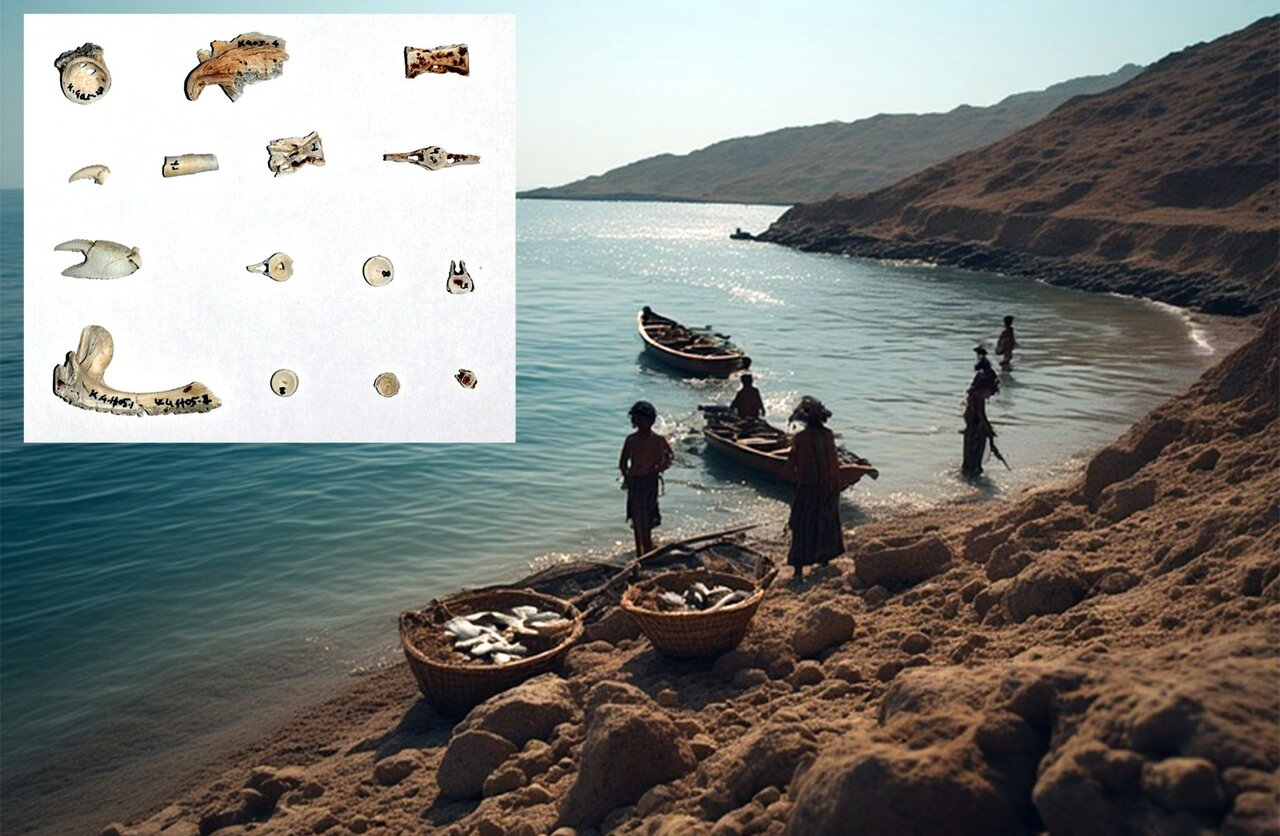6,000-year-old fishing village reveals ancient maritime diet and fishing technology in Iran’s Makran

TEHRAN - Archaeologists working at the Koupal site in Dashtyari county, southeast Iran, have uncovered remarkable evidence of a 6,000-year-old fishing settlement, providing detailed insights into ancient maritime subsistence strategies.
The excavation, led by Dr. Mortaza Hessari, uncovered 41 well‑preserved aquatic bone fragments together with fishing implements. Based on associated pottery, these finds date to the 4th millennium BC and belong to the broader Chalcolithic culture known from the Makran (aka Makkoran) and Baluchestan regions.
The bone remains, showing clear butchering marks from meat processing, demonstrate that these coastal inhabitants relied heavily on marine resources, with three main fish species identified as dietary staples: trevallies (Carangidae), groupers (Serranidae), and possibly tuna (Scombridae). Particularly significant is the discovery of fishing hooks and net weights, which provide concrete evidence that organized fishing activities were well established in this region by at least 4000 BCE, and may date back even earlier to Neolithic times.
Hessari added that the types of marine species found at the site suggest these ancient people possessed more advanced maritime technology than previously thought.
The presence of true offshore fish species indicates they had the capability for boat-based fishing, moving beyond simple shoreline gathering.
This finding places the Koupal settlement among the earliest known examples of sophisticated maritime adaptation in the region, contemporary with other early coastal human occupation emerging around the Persian Gulf and Makran Sea. The archaeological team has recognized the significance of these discoveries for understanding the evolution of early fishing technologies and maritime subsistence practices in ancient Iran.
Hessari also emphasized the crucial support provided by local authorities, particularly Governor Abdolaziz Miaei of Dashtyari county and the Chabahar Cultural Heritage Department, in facilitating this important research.
Looking to the future, the researchers hope these findings will lead to the establishment of a dedicated Makran Cultural Heritage Studies Center to further investigate and preserve the region’s rich coastal heritage.
As excavations continue at Koupal, archaeologists anticipate uncovering more evidence about the daily lives and maritime practices of these ancient coastal dwellers. The breadth of finds already recovered promises to significantly enhance our understanding of how early human societies adapted to and exploited marine environments along Iran’s Makran coast during the crucial transition to settled coastal living.
AM
Leave a Comment